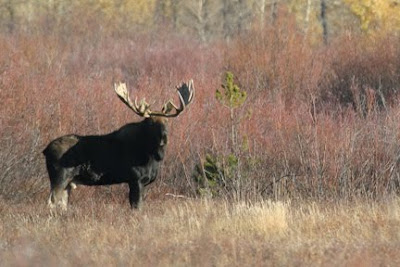First, it's simply easier to reproduce a photo than it is to work directly from life. The reason is that the mind has to do much less work when taking a two-dimensional image (a photograph) and reproduce it again, two-dimensionally, on paper or canvas. In contrast, the mind has to work hard to convert three-dimensional reality onto a two-dimensional plain and still achieve the illusion of three-dimensional form. The conversion that has to occur when working from life and placing what you see through direct observation onto a two-dimensional plain like paper or canvas is an exceptionally complex skill that can take many, many years to perfect. It’s also a skill an artist must polish if he or she is to accurately correct those simpler problems like photographic distortion and exaggerated atmospheric depth inherent to reference photographs.
The second, and in my view most sinister problem with using photographic reference, is it can make the artist lazy in the way of concept. Working from photographic reference, especially for those artists that work with subject matter that requires the use of the camera (like us wildlife artists), one can easily be seduced into simply reproducing a good photo. So rather than developing a concept for a painting, then looking to one’s photo reference library to help one realize one’s concept, the artist simply looks for a photo that would make a good painting.
Does this mean that directly copying a photo is always lazy...no. I have seen many artists whose personal style is so unique that it would be difficult to even recognize the photographic reference they used. Also, in the case of doing portraits, photographic reference may be the only means of capturing a likeness, such as when working with young children. But for many artists, the photo can become a crutch for laggard conceptualizing — photographic reference’s most artistically corrosive drawback in my view. The artist must avoid becoming a slave to his or her photographs.
With this in mind, I’ve decided to post how it is I often work using photographic reference. My painting titled “Date Night” makes a fair example:
 I began with the idea of creating a nocturne painting with moose as the subject. I did several sketches that served to nail down the composition. I then went to my photo reference library to find images I could use to realize my concept. In the end, I used four different images to help me complete the painting.
I began with the idea of creating a nocturne painting with moose as the subject. I did several sketches that served to nail down the composition. I then went to my photo reference library to find images I could use to realize my concept. In the end, I used four different images to help me complete the painting. I first located the subject of my painting. In the case of these reference photos, they are reversed from the actual painting. If I'm really adamant about a painting's direction being a certain way—as was the case with "Date Night"— I'll draw everything in reverse from my reference (it also makes for a challenging drawing exercise).
I first located the subject of my painting. In the case of these reference photos, they are reversed from the actual painting. If I'm really adamant about a painting's direction being a certain way—as was the case with "Date Night"— I'll draw everything in reverse from my reference (it also makes for a challenging drawing exercise). I used this bull moose for the cow in my painting. A few minor anatomical changes and poof! Female moose.
I used this bull moose for the cow in my painting. A few minor anatomical changes and poof! Female moose. This was my reference for the marsh and grasses. I often use reference like this photo as just a guide. You'll notice the actual grass in the painting is laid out much differently.
This was my reference for the marsh and grasses. I often use reference like this photo as just a guide. You'll notice the actual grass in the painting is laid out much differently. And finally, I used this image for creating the tree and background mountains.
And finally, I used this image for creating the tree and background mountains.You may have noticed I had no reference for creating the nocturne itself. For this I looked to how other artists had handled painting night scenes and essentially flew by the seat of my pants (this is the first nocturne I've ever painted).
In locating images for use as reference, I try to keep a few things in mind...
1) Light sources.
I make sure the light source at least loosely matches from photo to photo.
2) Environment.
When building a painting where the environment will play an important roll, I try to make sure all of the reference I utilize is from the same geographic area. As an example, I don't want to be putting plants in a painting that wouldn't exist in that environment.
3) Integrity of the Concept.
I try to remember not to let the reference change the concept — which it can sometimes do if you're not careful.
Remember that it's called photographic reference for a reason. And most importantly, never let your photos limit your ideas.
